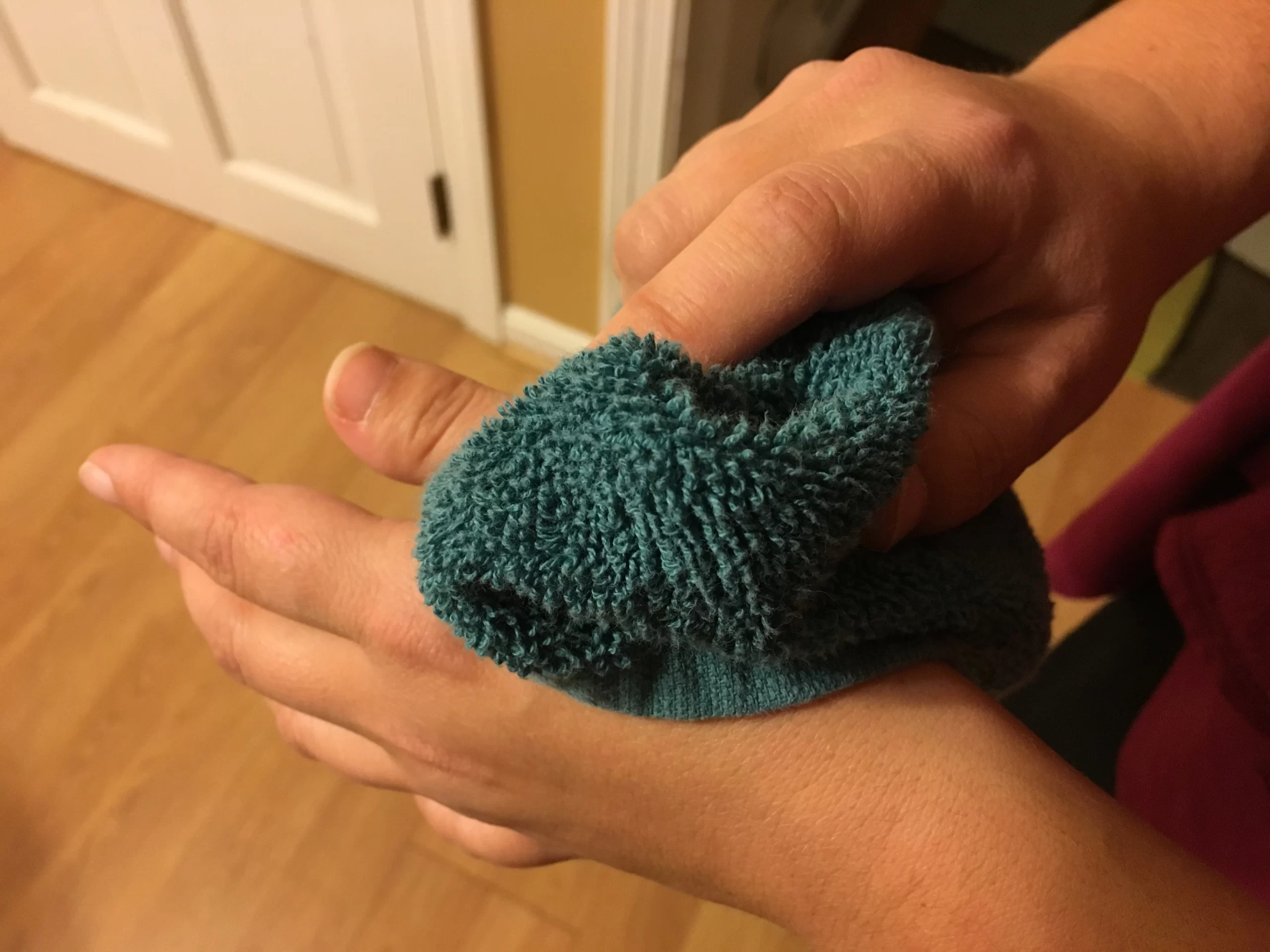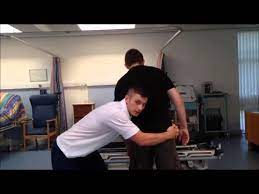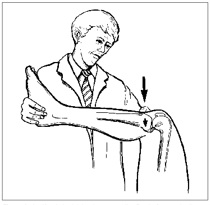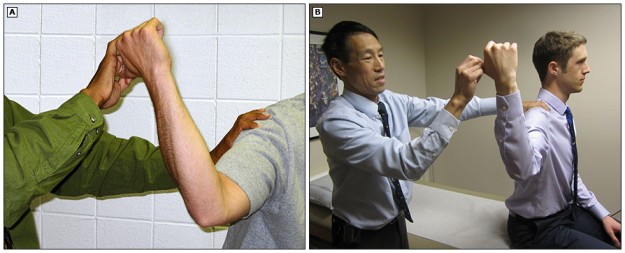Desensitization Techniques
Description
People with Complex Regional pain syndrome may exhibit abnormal sensations throughout all or part of the affected area. This often contains improved sensitivity to stimuli such as touch, pressure, or temperature. Desensitization may also be an adequate way to treat hypersensitivity, especially when combined with other medical and/or therapeutic interventions.
This therapy strives to remove the fear response of a phobia and substitute a relaxation response to the conditional stimulus slowly employing counter-conditioning. The patient is counter-conditioned and taught a new organization that is to counter the original behavior learned.
Definition
Desensitization is a restorative approach used to modify how sensitive an area is to particular stimuli. This technique is utilized to reduce or normalize, the body’s reaction to particular sensations.
purpose
To gradually increase tolerance to touch in an area of hypersensitivity, to improve function.
What are a Desensitization Techniques?
Damaged tissues can have heightened reactions to touch, which is why things that should not be painful feel painful to you. This occurs because your sensory nerves are more irritable. This concept is called hypersensitivity. It is the technique or method that helps to reduce hypersensitivity.
It involves re-educating the nervous system by applying non-noxious stimuli to the tissues to increase their threshold for sensory stimuli. If desensitization procedures are not performed, the brain will continue to interpret touch as painful, and this pain message can become permanently fixed. Thus, the area must get used to the existing touch again.
Mechanism of Desensitization Techniques
It is consistent stimulation to the affected area for short periods, frequently throughout the day. These little bursts of therapeutic activity shower the brain with sensory input. The brain reacts to this demand by acclimating to the sensation, thereby gradually decreasing the body’s pain response to the particular stimuli. The body gets utilized to the stimulus and the stimuli become tolerable and no longer produce the maximal pain response.
Indication of Desensitization Techniques
Hypersensitivity because of abnormal pain processing
Application of Desensitization Techniques
It affects the application of “unpleasant” stimuli to the hypersensitive area. These stimuli are the ones that the body is routinely disclosed to and do not elicit a painful response when presented to non-affected areas of the body, thus they are not harmful or damaging. The items utilized for desensitization vary, relying on what the affected area interprets as painful. Stimuli may consist of different textures/fabrics, light or deep pressure, vibration, tapping, heat, or cold.
Progression of the application
It progresses slowly from stimuli that produce the least painful retort to stimuli that produce the most painful response. Once the affected area begins to acclimate to the initial stimulus, the next catalyst is incorporated. For instance, a desensitization program may progress from a very soft fabric stimulus (i.e., silk) to a rougher material (i.e. wool) or textured fabric (i.e. Velcro). The method of this progression may take several days to several weeks, counting on the level of hypersensitivity.
Effectiveness
Desensitization may minimize the body’s painful response to various stimuli; however, the affected area may still feel uncomfortable when in contact with particular stimuli. The purpose of desensitization is to inhibit or interrupt the body’s interpretation of routine stimuli as painful. It does not assure that these stimuli will become pleasant, but that they will no longer provoke an extreme pain response. There will be tropical changes over the applied part, to prevent the application of ice coolant spray following the desensitization gives better results.
Home Desensitization Program
How does desensitization work?
A desensitization program frequently provides a sensory stimulus to the affected area for short periods throughout the day. A stimulus is a portion of textured fabric, a brush, an ice cube, or another tool that provides the brain with sensory input. Gradually, the brain responds to this stimulus by getting used to the sensation (desensitizing) and decreasing pain.
What does a desensitization program consist of?
In a desensitization program, you will use a stimulus that causes the least painful response and gradually transition to stimuli that cause the most painful response. Once the affected area begins to get accustomed to the first stimulus, the next stimulus is introduced. For instance, you may start with a very soft material stimulus (silk) and transition to a rougher material (wool) or textured fabric (Velcro). The course of this passage may take several days to several weeks, counting on the level of hypersensitivity.
How do I perform desensitization at home?
- Achieve a total of 8 to 10 minutes of desensitization, 4 to 8 times per day. Begin with only 1 to 2-minute increments at a time based on your tolerance.
- Change the stimulus you use each day. Models of a stimulus you can use:
- Brushing: employ a hairbrush or combing in circular or sweeping motions over the area.
- Tapping: utilize your hand to tap or pat the area.
- Towel rubs: utilize a dry towel and rub the area in circular or sweeping motions.
- Massage: massage the area with your hands, may employ lotion
- Vibration: involve a home massager or other vibration tool over the area.
- Light touch: gently “tickle” the site with your fingertips
Additional desensitization ideas and tools:
- Rub lotion
- Ice cubes
- Warm washcloths
- Warm/cold water
- Erasers
- Rice
- Velcro
- Toothbrush
- Cotton balls
- Q-tips
- Cold packs/warm packs
- Paintbrush
- Silk
- Tennis ball
- Sponge
- Leather
- Cotton
- Wool
- Corduroy
- Netting
- Soap or shaving cream
What steps do I take to perform desensitization?
- Choose up to 5 textures
- Begin with the texture that you assume is the most tolerable. Involve it in your unaffected limb in the same area as the painful area of the affected limb.
- Move the consistency against your skin with light stroking, firm stroking, and circular motions according to what you can tolerate.
- Retain your eyes open and look at what you are involving and where you are applying it to.
- Speak out loud about what the item is that you are applying to your body and where you are applying it.
- Condense how it feels and express it out loud.
- Now apply the identical texture to your affected limb and repeat the process.
- Observe thinking about your unaffected limb while moving toward the painful area.
- Go further toward the painful area, still thinking of pleasant feelings.
Does it feel the same?
Have an individual test you with your eyes closed. Can you guess what texture you are feeling?
Desensitization Exercises
After damage or surgery, it is common for an area to develop improved sensitivity. This may result in distress when everyday objects touch the area. Desensitization is a therapy to reduce sensitivity by exposing the area to various textures and pressures. Once your incision is healed, you may begin activities as advised by your therapist.
Exercises
- Massage the susceptible area with fabrics of various textures. Begin with softer materials and progress to rougher fabrics. Instances of fabrics: Cotton balls, Cotton fabric, Velcro hook, Flannel, Terry cloth, Velcro loop
- Thump along the sensitive area using a small dowel, eraser, or fingertips. Slowly increase the pressure. Tap the susceptible area into a pillow or cushion.
- Cruise the area along a dowel, or roll of putty, or use an empty deodorant, lip balm, or fragrance bottle with a roller tip and roll the ball over the area.
- Using a little massager or electric appliance (shaver/toothbrush), massage along the sensitive area.
- If your hand requires desensitization, place your hand in a container filled with any of the following dry items: Rolled oats, Rice, Sand, and Dry beans. Open and close your hand or search for tiny entities hidden in the container.
How often – It is important to touch your irritated skin regularly! At first, try short sessions (approximately 2 to 3 minutes) every waking hour or every other hour. As your tolerance increases, build up to longer sessions (5 to 10 minutes each).
Tips– Make sure you are relaxed (put on calming music, watch a favorite TV show, light a candle…)
How Systematic Desensitization Can Assist You Overcome Fear?
Systematic desensitization is an evidence-based treatment approach that combines relaxation techniques with gradual exposure to assist you in slowly overcoming a phobia.
During frequent desensitization, also called graduated exposure therapy, you work your way up through levels of fear, forming with the least fearful exposure. This approach also concerns the use of relaxation techniques. Both of these attributes make it distinguishable from other desensitization techniques, such as flooding.
How is it done?
Systemic desensitization applies three main steps. First, you will learn muscle relaxation techniques. Then after, you will complete a list of your fears, ranking them in terms of intensity. Finally, you will begin exposing yourself to what you fear.
Classical training, sometimes associative knowledge principles, is the underlying theory behind this process. The goal is to overwhelm a phobia by returning feelings of fear and anxiety with a state of calm.
As you work your way through your list of fears, you will continue to focus on relaxation when encountering each new situation until it no longer causes discomfort.
Learning relaxation skills
You might learn a few various relaxation exercises in systematic desensitization. These exercises could be utilized on their own or in combination with each other.
Techniques you might learn to include:
- Diaphragmatic breathing. With this technique, you will learn to regulate your breathing by breathing slowly and deeply through your nose, holding your breath for one to two seconds, then breathing out through your mouth.
- Visualization. You will focus on a relaxing scene, picturing it in your mind and concentrating on sensory details, such as sights or smells. This contains guided imagery, which involves someone describing a scene to you.
- Progressive muscle relaxation. You will learn to tense up and release muscles throughout your body. This technique can also reduce muscle tension and help you recognize the difference between tense and relaxed muscles. That way, you will be able to better recognize when your muscles start tensing up in response to anxiety or fear.
- Meditation and mindfulness techniques. Learning meditation may assist you to become more aware of your thoughts and feelings as you face a fearful situation. Mindfulness helps you notice what you are experiencing in the present moment, which can also reduce anxious thoughts.
Creating a hierarchy of fears
After learning relaxation techniques, you will develop a fear hierarchy for the phobia or feared situation. This hierarchy usually involves 10 levels of fear.
You will likely go through the following steps to do this:
- At first, you will identify the most frightening level of your fear, or the “level 10” fear.
- Next, you will identify the least frightening level of your fear, or the “level 1” fear.
- Then, you will list the levels in between and rank them by the amount of fear they trigger. For example, seeing a photo of what you fear might be a level 3, but touching the thing you fear could be a level 8 or 9.
- Next, you will develop ways to expose yourself to each level of fear. This is usually done with the assistance of a therapist.
- Finally, you will begin exposing yourself to your fear, starting with the least frightening items on your list.
Slowly exposing yourself to fears
Once you have leisure techniques and a hierarchy of fears, you can also start gradually exposing yourself to your fears.
A standard first step is thinking about the thing you fear. Once you begin feeling scared or anxious, use relaxation techniques to regain a sense of calm. Reprise the process until you no longer feel anxious.
When you may comfortably manage a particular level of fear, move on to the next level. You may also work through your fear hierarchy in therapy, but you can also do it on your own.
What are some examples of systematic desensitization?
- The methodology of systematic desensitization differs for each person.
- A few individuals move through low levels quickly and have a hard time overcoming higher levels. Others may take a long time to work via lower levels, but they find the fear more comfortable to face once they have succeeded at the lower levels.
- The most valuable relaxation technique can also vary. You might find visualization assists you relax the most, for example.
- Yet of your fear or the length of time you spend working through each level, the principles remain the same.
- Here’s how systematic desensitization might look for various conditions.
Social anxiety
- You are a college student with social anxiety. When you handle about giving the wrong answer in class or having to ask to use the restroom, you feel sick and your heart races. You evade speaking in class or experiencing college activities to avoid embarrassing situations.
- When you decide to try systematic desensitization, you determine that talking to someone you do not know is a level 1 fear. You start imagining yourself vocally greeting people, and practicing deep breathing when you feel anxious until you can remain calm.
- Next, you move on to salute strangers in real life. After a week of doing this every day, you start to feel more at ease.
- Then, you commence working on the next fear — making eye contact during conversation. You portray your way through the hierarchy, eventually introducing yourself and nodding along in class. Your resume utilizes deep breathing and muscle relaxation to get through periods of discomfort.
- The absolute level of your fear hierarchy involves sharing in class. It takes a few tries, but ultimately, you can answer questions in class, though your heart still begins to race once you put your hand up. You take a deep breath, terminate the tension in your muscles, and begin to speak.
Dog phobia
- When you see a dog reaching toward you in the distance, your palms sweat, your heart races, and you have trouble breathing. Your phobia relates especially to being bitten, but being around dogs also makes you feel afraid and anxious.
- To get begun on your hierarchy of fears, you begin by imagining you are near a dog on a leash in a passing car. The next day, you manipulate by a dog park several times. It does not seem to influence you much, so you park somewhere where you have a full view of the park.
- You feel apprehensive every time a dog starts barking. To fight this, you concentrate on relaxing your muscles and visualizing yourself on a beautiful beach — one without dogs. You open your eyes and replicate this process for the next 30 minutes.
- Next, you spend time with a friend who keeps her dog in a separate room of her home while you are visiting. You rehearse relaxation exercises each time you think about the dog getting out.
- As you prepare to defeat your level 10 fear — walking through a dog park — you choose to spend some time in the puppy area of your local animal shelter.
- Puppies are less threatening to you, but the thought of them being so close still makes you feel anxious. You have to step beyond a few times to do some deep breathing and visualization exercises.
- Eventually, after months of work, you head back to the dog park. At this moment, you park your car and walk through the gates. You sit on a bench and rehearse deep breathing as you watch the dogs playing.
- Though you still feel somewhat frightened, you focus on the fact that you are facing your fear.
How can I try it on my own?
It’s possible to try systematic desensitization on your own, but remember that slow, gradual exposure is a key component of this approach. If low-level exposure makes you feel anxious, keep practicing your relaxation techniques and working on that fear.
There is no good pace for working through your hierarchy of fears. You might spend months on a single one, only to blast through the next two over a few weeks. Take as much time as you need. If you move too quickly, you may put yourself in disproportionate discomfort.
If you would like to try this approach on your own, the following tips can help:
- Familiarize yourself with relaxation techniques. If you are already feeling tense and anxious, thinking about relaxing may be harder, so it is important to learn these techniques first.
- List at most undersized two items for each level of fear on your hierarchy. This allows for more additional exposure to your phobia.
- Practice exposing yourself to your fear each day. A few minutes every day can assist.
- Determinate to stop and use a relaxation exercise when you feel anxious. The goal is to substitute the anxious feeling with a relaxed state. You might have to try each step considerably times, and that’s OK.
- Try to continue the orientation exercise until you feel about half the fear or anxiety you typically would. This can be hard to gauge, but you will likely become better able to track it as you become more familiar with exposure.
If you are uncertain about trying systematic desensitization on your own, a therapist can reply to any questions you have and offer support. If the approach does not work well for you, you can research other approaches in therapy.
Key Evidence
Desensitization could be considered as delivering corrective tactile input to the manufactured limb body schema. Traditionally this has been conducted utilizing a range of textured fabrics but more recent research indicates that electrical sensory discrimination training devices may also play a role. The use of various textures involved in the affected skin can also provide tactile information regarding the precise shape and size measurements of the contact area contributing to a more accurate somatosensory representation.
Likewise, encouraging patients to look at the limb at the time of skin contact provides corrective visual input of the limb. Although the effect of desensitization on body perception disturbances has not been researched per se, it would be appropriate to suggest that this intervention may be beneficial as it has been shown to aid the deterioration of cortical reorganization.
Normalization of internal body maps definitely should have an unpretentious positive impact on body perception. Desensitization has also been described by patients as help full in perceiving the affected limb in a more normal way.
FAQ
What happens during desensitization?
Desensitization is a therapy that alters the immune response to the drug and results in temporary tolerance, allowing the patient with a drug hypersensitivity response to receiving an uninterrupted course of the medication safely.
How long does it take for nerves to desensitize?
For instance, a desensitization program may progress from a very soft material stimulus (i.e., silk) to a more unpolished material (i.e. wool) or textured fabric (i.e. Velcro). The course of this advance may take several days to several weeks, depending on the level of hypersensitivity
What are the benefits of desensitization?
Usefulness. Systematic desensitization is a form of exposure therapy, which aids patients by breaking cycles of avoidance, fear, and anxiety. 2 Through therapy, patients can tackle their fears in a safe environment with a mental health professional who may also assist them develop relaxation and coping strategies.
What makes a person desensitize?
Desensitization also happens when an emotional response is repeatedly evoked in situations in which the action tendency that is associated with the emotion proves irrelevant or unnecessary.
What are the disadvantages of desensitization?
The disadvantage of systematic desensitization is that it is slow and frequently necessary to eventually implement some form of real-life exposure to fully reduce the fears.
What are desensitization exercises?
In desensitization exercises, the painful area of the hand is touched and stimulated to gradually decrease oversensitivity. Surface rubbing, constant touch, pressure, or immersing the hand in materials such as rice or beans are the most commonly utilized techniques.
What is a desensitization protocol?
Desensitization protocols have been developed only for therapeutic purposes to safely administer a drug to which the patient has a proven or highly suspected hypersensitivity reaction. They consist of the administration of augmenting doses of the drug with a pre-determined schedule.
How is desensitization done?
Desensitization is a technique in which small incremental doses of the drug are given at 15 or 20-minute intervals (as tolerated), based on selected protocols for oral and parenteral treatment, respectively, until therapeutic doses are achieved. Generally, about 14 to 18 incremental doses are administered in total.
What is the desensitization of receptors?
Receptor desensitization directs to the decreased responsiveness that occurs with repeated or chronic vulnerability to agonists and is a general feature of most signaling membrane receptors.
How does allergy desensitization work?
Over time, your doctor inflates the dose of allergens in each of your allergy shots. This assists get your body used to the allergens (desensitization). Your immune system produces a tolerance to the allergens, causing your allergy symptoms to decrease over time.







